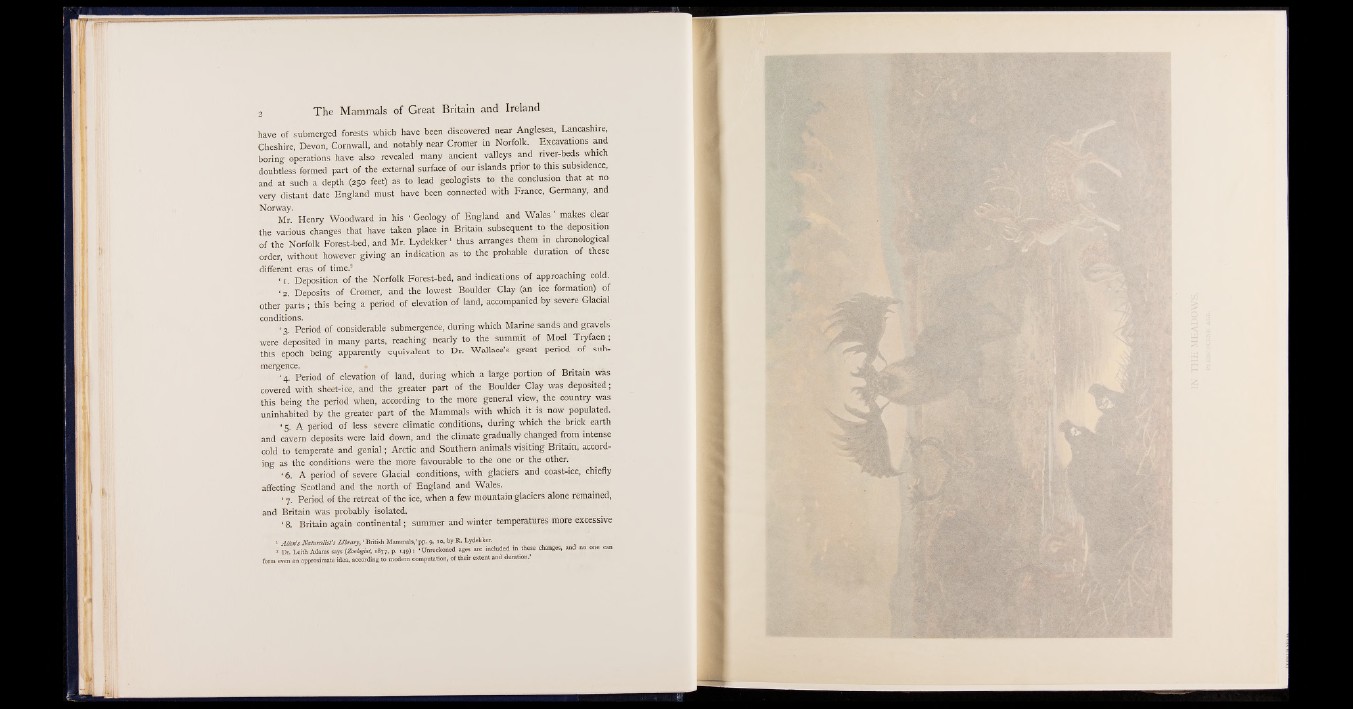
have of submerged forests which have been discovered near Anglesea, Lancashire,
Cheshire, Devon, Cornwall, and notably near Cromer in Norfolk. Excavations and
boring operations have also revealed many ancient valleys and river-beds which
doubtless formed part of the external surface ®|J|our islands prior to this subsidence,
and at such a depth (250 feet), as to lead geologists to the conclusion that at no
very distant date England must have been connected with France, Germany, and
Norway. . .
Mr. Henry Woodward in his ‘ Geology of England and Wales makes clear
the various changes that have taken place in Britain subsequent to the deposition
of the Norfolk Forest-bed, and Mr. Lydekker1 thus arranges them in chronological
order, without however giving an indication as to the probable duration of these
different eras of time.1 2
Deposition of the Norfolk Forest-bed, and indications of approaching cold.
'2. Deposits of Cromer, and the lowest Boulder Clay (an ice formation) of
other parts ; this being a period of elevation of land, accompanied by severe Glacial
conditions. .
‘ 3. Period of considerable submergence, during which Marine sands and gravels
were deposited in many parts, reaching nearly to the summit of Moel Tryfaen;
this epoch being apparently equivalent to Dr. Wallace’s great period of submergence.
* _ . .
‘ 4. Period of elevation of land, during which a large portion of Britain was
covered with sheet-ice, and the greater part of the Boulder Clay was deposited;
this being the period when, according to the more general view, the country was
uninhabited by the greater part of the Mammals with which it is now populated.
‘ 5. A period of less severe climatic conditions, during which the brick earth
and cavern deposits were laid down, and the climate gradually changed from intense
cold to temperate and genial; Arctic and Southern animals visiting Britain, according
as the conditions were the more favourable to the one or the other.
‘ 6. A period of severe Glacial conditions, with glaciers and coast-ice, chiefly
affecting Scotland and the north of England and Wales.
‘ 7. Period of the retreat of the ice, when a few mountain glaciers alone remained,
and Britain was probably isolated.
‘ 8. Britain again continental; summer and winter temperatures more excessive
1 Allen's Naturalist's Library, ‘ British Mammals,’ pp. 9, 10, by R. Lydekker.
2 Dr. Leith Adams says (.Zoologist, 1877, p. 149): ‘ Unreckoned ages are included in these changes, and no one can
form even an approximate idea, according to modern computation, of their extent and duration.’